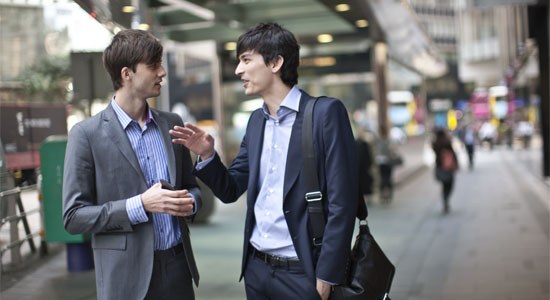The onset of the digital revolution has significantly altered the manner in which we conduct our day-to-day activities. It has redefined our world, not only shaping the way we communicate and experience brands and organizations, but it has also led to the emergence of new business models, elevated the standards of consumer experience, and heightened the efficiency of operations. Of course, nowhere is this more evident than in the life of a continent-hopping business traveler.
According to the U.S. Travel Association, U.S. residents made 452 million business trips in 2013. That’s almost 1.2 million trips daily. This means that their interactions during travel spanned across various sectors such as airlines, hotels, transportation, communication and food. And it was during my trip to the UK last week when I noticed this very apparent digital sweep across these many industries.
At the Hilton, where I was staying, I noticed most of the front desk staff wearing badges that read, “I Love Digital.” This piqued my curiosity, and on speaking to the manager, I discovered that Hilton had taken digital to its grassroots, trying to redefine their guest experience.
For example, if you are a Hilton Honors Club member, and use the Hilton App, you are privy to certain benefits, like the option to select the room of your choice (much like how you would choose your seat on an airline), and reserve it in advance. This can be quite useful for a person like me who can be quite specific and particular about the room number. Some hotels also provide an app that can open the door to a room without having to go through the front desk. A truly innovative idea.
On leaving the hotel I needed a cab, but instead of hailing a regular taxi, I instinctively turned to the Uber app on my smartphone and found a number of vehicles I could summon. It’s a refreshing change, considering that earlier I had to request the hotel call a taxi, wondering if they accept payment by card. No such issues with Uber of course, the transaction is completely cashless. Considering that most companies urge their customers to pay by card, this system works very well for corporate travelers. Not to mention it is much less expensive than traditional taxis. On a round trip to a convention center in Manchester, I found Uber nearly 50 percent less expensive than the Austin Taxi service at Manchester Central. So, while the company may not own its own cabs, it has still managed to create a new business model in the transportation industry, purely driven by the increased digital awareness among people.
The digital spin is leaving its footprints in the food industry as well. According to a survey conducted by Virgin Airlines, almost 81 percent of their business travelers at airports focus on dining. And restaurants across airports have been leveraging this digital edge—not only to enhance the customer dining experience, but also to increase staff efficiency—by way of touchscreen interfaces to order food and card readers for immediate billing. I was most impressed by the self-service checkout kiosks at the W. H. Smith outlet at Heathrow. That was very efficient. It significantly reduced the order delivery duration, and the staff was assigned critical duties, such as customer service and sales. Naturally, I couldn’t help but compare the place to an outlet like Boots that still has the manual billing system.
Only a digital savvy traveler might be able to appreciate and make the most out of these facilities. There are many who still prefer traditional methods, relying on more established channels.
According to a report from the Dell Digital Business Services, almost 70 percent of organizations are just starting out with their digital transformation journey, and have adopted it only in sections. Of course, we do see transformations in banking, insurance and retail—and more recently even in healthcare. Today, individuals demand the same experience from hospitals and physicians that they receive from other service providers. This point that was driven home by Raman Sapra, Global head for Dell Digital Business Services at a panel discussion on “Driving Superior Patient Engagement in the Digital Era.” Nonetheless, I do think business travelers are still at the forefront of experiencing the digital momentum and truly living its power to make life simpler and have greater access to everyday conveniences. I’m certain the impact will slowly percolate into other sectors of branding, organization and communication as well. Hopefully they will be noticed by people other than the corporate frequent flyer.

